How to Select the Best QA Software for Your Call Center
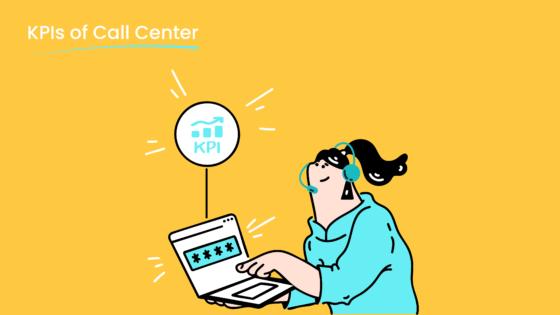
Call center quality assurance plays a vital role in delivering exceptional customer service. It ensures your agents consistently meet customer expectations while addressing their concerns effectively. Without it, many interactions may fall short.
- 93% of customers expect their issues to be resolved on the first call, but only 53% describe their experience as great.
- 46% of unresolved callers feel agents could have done more to help.
By adopting the right call center quality assurance monitoring software, you can transform your operations. Tools like AI-driven call optimization reduce average handling time and ensure customers connect with the most suitable agents. Sobot’s solutions, for example, enhance performance and satisfaction by streamlining processes and improving resolution rates.
What Is Call Center QA Software and Why Is It Important?
Definition of Call Center Quality Assurance Monitoring Software
Call center quality assurance monitoring software is a specialized tool designed to evaluate and improve the performance of your call center operations. It helps you monitor customer interactions, assess agent performance, and ensure that your team consistently delivers high-quality service. By automating the quality assurance process, this software eliminates manual errors and provides actionable insights to enhance customer service quality.
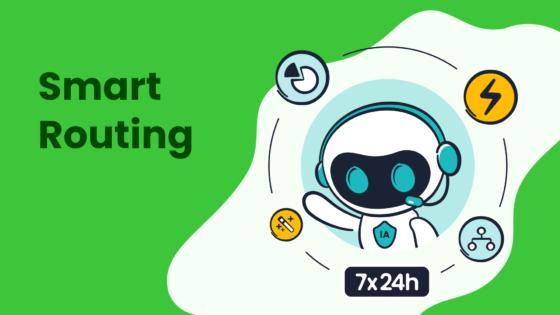
Modern QA software often incorporates advanced technologies like artificial intelligence (AI) and machine learning. These features allow you to analyze large volumes of data, identify trends, and predict customer satisfaction levels. For example, tools like Sobot’s call center solutions use AI-powered analytics to track key metrics such as first call resolution (FCR) and customer satisfaction (CSAT). This ensures that your agents meet customer expectations while maintaining operational efficiency.
Benefits of Call Center QA Software for Customer Service
Implementing call center QA software offers numerous benefits that directly impact customer service quality. Here are some key advantages:
- Improved Customer Satisfaction: Studies show that 40% of customers switch companies due to poor experiences. QA software helps you identify and address service gaps, ensuring a seamless customer journey.
- Enhanced First Call Resolution: A 1% improvement in FCR correlates with a 1% increase in customer satisfaction. By using QA tools to monitor and optimize call quality assessment, you can reduce repeat calls and improve resolution rates.

- Data-Driven Insights: Advanced QA software provides real-time analytics, enabling you to make informed decisions. For instance, Sobot’s solutions offer detailed reports on agent performance and customer interactions, helping you refine your strategies.
- Cost Efficiency: Automating quality assurance processes reduces the need for manual evaluations, saving time and resources. This allows your team to focus on delivering exceptional service.
The global market for call center quality assurance monitoring software is growing rapidly, with an expected CAGR of 8.9% from 2023 to 2032. This growth highlights the increasing demand for tools that enhance customer service quality and operational efficiency.
How QA Software Enhances Agent Performance and Customer Experience
Call center QA software plays a crucial role in boosting agent performance and improving the overall customer experience. Here’s how:
- Comprehensive Training and Feedback: QA tools provide detailed evaluations of agent performance, highlighting areas for improvement. This enables you to offer targeted training and constructive feedback, empowering your agents to excel.
- Real-Time Monitoring: With features like real-time call tracking, you can monitor agent interactions as they happen. This ensures immediate intervention when necessary, maintaining high service standards.

- AI-Powered Analytics: Advanced QA software, such as Sobot’s AI-driven solutions, evaluates 100% of calls using machine learning. This not only improves accuracy but also predicts customer satisfaction with a 95% success rate.
- Enhanced Customer Interactions: By identifying patterns and trends, QA software helps you tailor your services to meet customer needs. For example, Sobot’s unified workspace consolidates customer data, enabling agents to provide personalized support.
The benefits extend beyond individual interactions. A well-implemented QA system fosters a culture of continuous improvement, ensuring that your call center consistently delivers top-notch service.
Key Features to Look for in Call Center Quality Assurance Monitoring Software
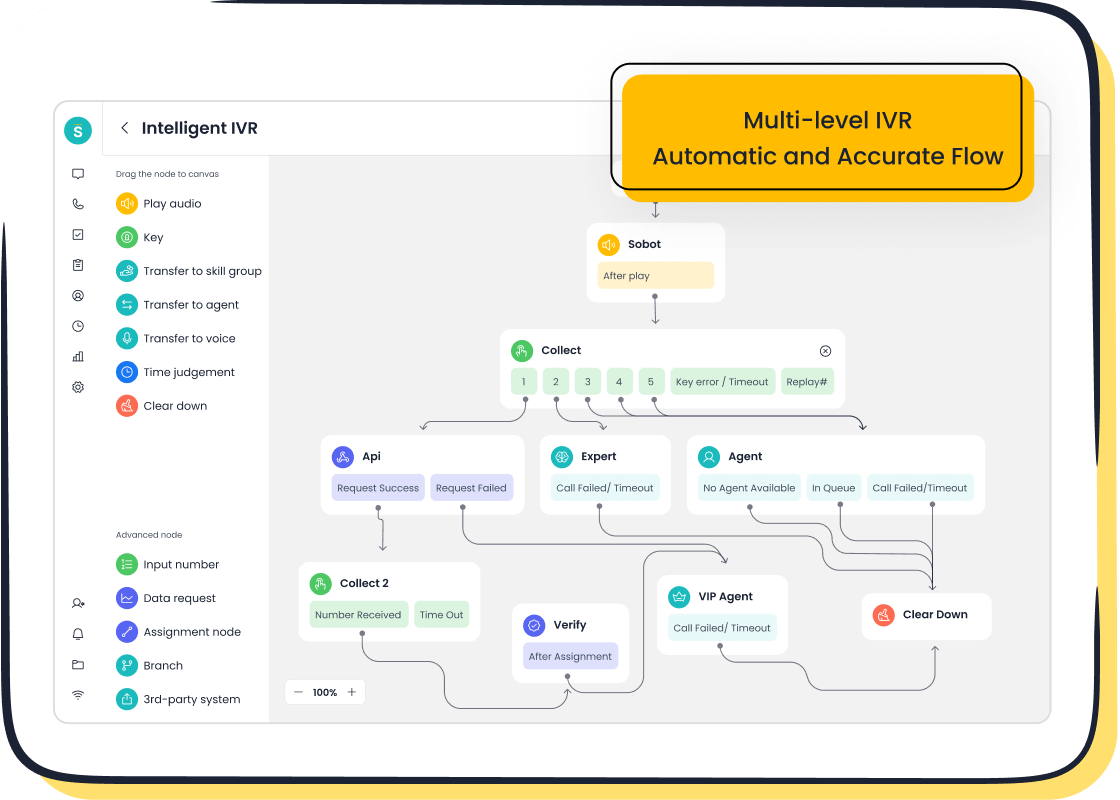
Real-Time Monitoring and Reporting Capabilities
Real-time monitoring is essential for maintaining a robust quality assurance framework in your call center. It allows you to track agent interactions as they happen, ensuring immediate feedback and intervention when necessary. This feature helps you maintain consistent service quality while improving agent performance.
With real-time reporting, you can generate up-to-date dashboards that provide actionable insights. These dashboards often include data visualization tools like charts and graphs, making it easier to interpret performance metrics. For example, tracking metrics such as First Call Resolution (FCR) and Average Handle Time (AHT) helps you identify areas for improvement. Alerts and notifications also play a critical role by notifying you of significant changes or anomalies in real time.
Key benefits of real-time monitoring include:
- Immediate feedback to agents for better performance.
- Enhanced decision-making through real-time data collection and integration.
- Improved customer satisfaction by addressing issues promptly.
Integration with CRM and Telephony Systems
Seamless integration with CRM and telephony systems is a cornerstone of an effective quality assurance framework. This feature ensures that your QA software works harmoniously with existing tools, providing a unified view of customer interactions.
When your QA software integrates with CRM systems, agents can access comprehensive customer histories during calls. This reduces repetitive questioning and enhances the customer experience. Integration with telephony systems allows you to track call data, such as call duration and resolution rates, directly within the QA platform.
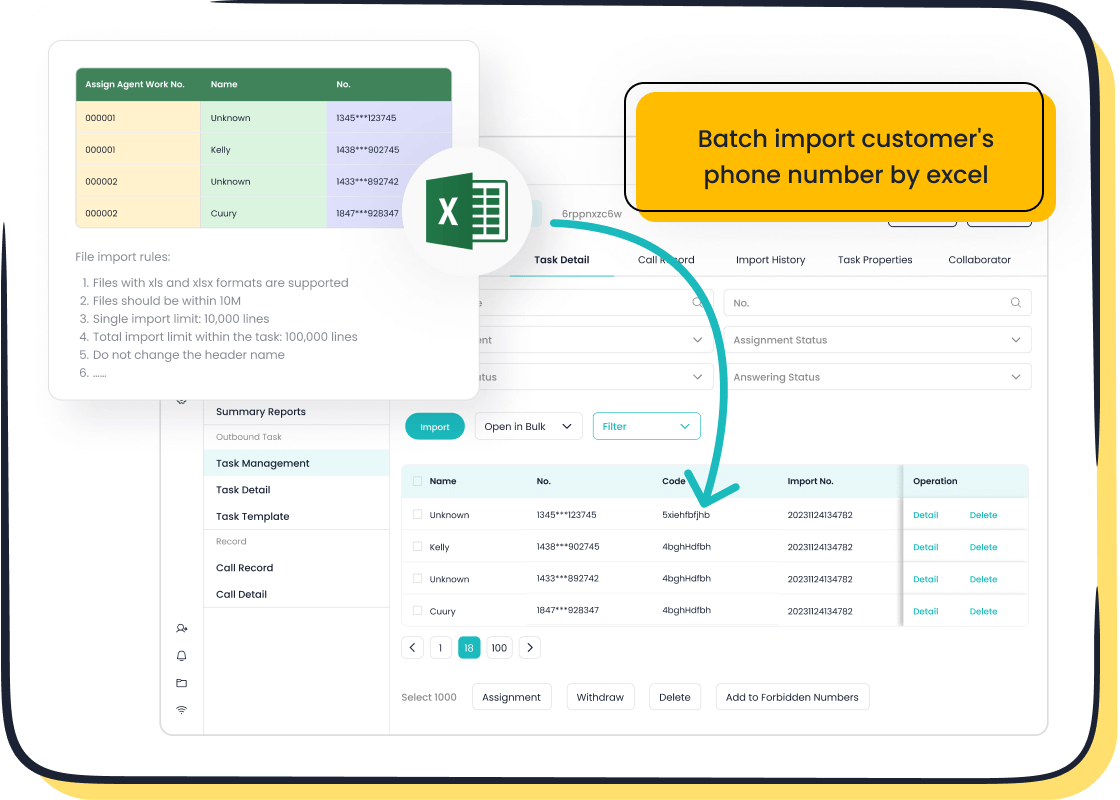
For instance, Sobot’s solutions offer seamless integration capabilities, enabling you to connect your QA software with tools like Salesforce or Shopify. This ensures that all customer data is centralized, making it easier to evaluate agent performance and improve service quality.
Customizable Evaluation Forms and Metrics
Customizable evaluation forms are vital for tailoring your quality assurance framework to meet your specific business needs. These forms allow you to define criteria that align with your goals, ensuring that evaluations are relevant and effective.
By customizing evaluation metrics, you can focus on areas that matter most to your operations. For example, you might prioritize metrics like Customer Satisfaction (CSAT) or Call Quality Scores. Customizable forms also make it easier to adapt to changing business requirements, ensuring that your QA processes remain aligned with your objectives.
A table summarizing the benefits of this feature:
| Feature | Benefit |
|---|---|
| Customizable evaluation forms | Tailors assessment criteria to specific business needs, enhancing the relevance of evaluations. |
| Data analytics | Informs training decisions and performance evaluations by highlighting common issues faced by agents. |
Incorporating customizable forms into your QA software ensures that your evaluations are both meaningful and actionable. This leads to better training programs, improved agent performance, and higher customer satisfaction.
AI-Powered Analytics for Performance Insights
AI-powered analytics revolutionize how you evaluate call center performance. These tools transform raw data into actionable insights, enabling you to identify trends and optimize operations. By leveraging AI, you can uncover patterns in customer interactions that might otherwise go unnoticed. This empowers you to make informed decisions that enhance both agent performance and customer satisfaction.
- AI analytics improve call center evaluations by offering detailed insights into agent behavior and customer needs.
- They highlight trends that help refine training programs and operational strategies.
- Regular reviews using AI metrics foster continuous improvement in employee engagement and service quality.

For example, Sobot’s AI-driven solutions analyze 100% of calls, providing real-time feedback on key metrics like First Call Resolution (FCR) and Customer Satisfaction (CSAT). This ensures your agents consistently meet performance standards while delivering exceptional service. AI also predicts customer satisfaction with remarkable accuracy, allowing you to address potential issues proactively.
By integrating AI-powered analytics into your QA software, you create a culture of continuous improvement. This approach not only boosts agent efficiency but also ensures your call center remains competitive in a rapidly evolving market.
Scalability and Multichannel Readiness
Modern QA software must adapt to the growing demands of your business. Scalability ensures the software can handle increasing call volumes and customer interactions without compromising performance. Multichannel readiness allows you to manage quality across various communication platforms, including voice, email, chat, and social media.
| Aspect | Description |
|---|---|
| Automation in Quality Management | Uses technology to analyze customer interactions, improving efficiency and effectiveness. |
| Multichannel Quality Management | Captures and evaluates interactions across various channels, ensuring comprehensive performance visibility. |
| Analytics-fueled Management | Leverages data analytics to enhance quality management practices and outcomes. |
| Outcomes-based Management | Focuses on measurable results to assess and improve quality assurance processes. |
QA software like Sobot’s solutions provides a complete overview of customer interactions. It captures data from every touchpoint, enabling real-time monitoring and immediate adjustments. This ensures your quality assurance efforts remain effective, even as your business scales.
The hallmark of modern QA software is its ability to provide an end-to-end view of customer interactions. From service calls to follow-up surveys, nothing is overlooked. This comprehensive approach ensures consistent quality across all channels.
Scalable and multichannel-ready QA software equips you to meet customer expectations in today’s omnichannel environment. By adopting such solutions, you future-proof your call center operations while delivering seamless, high-quality service.
How to Evaluate and Select the Best Call Center QA Software
Define Your Call Center’s Specific Needs and Goals
Before choosing call center QA software, you need to clearly define your call center’s specific needs and goals. This step ensures that the software aligns with your operational objectives and addresses your unique challenges.
Start by identifying the primary issues your call center faces. Are you struggling with compliance monitoring, agent training, or improving first-call resolution rates? For example, if compliance is a concern, you may need software with call recording and transcription features. If agent performance is a priority, look for tools that offer customizable evaluation metrics and detailed analytics.
Here are some key considerations to guide you:
- Align tools with your evaluation objectives.
- Ensure the software offers customizable metrics for unique operational needs.
- Choose a user-friendly interface for effective utilization.
Sobot’s call center QA software provides features like real-time monitoring, AI-powered analytics, and customizable evaluation forms. These tools help you address specific challenges while improving agent performance and customer satisfaction.
Tip: Clearly define your goals before exploring software options. This will save time and ensure you select a solution that meets your needs.
Research and Compare Call Center QA Software Options
Once you’ve defined your needs, research and compare different call center QA software options. This step helps you identify the most effective call center QA software for your operations.

When comparing options, focus on features that directly impact your call center’s performance. Look for tools with real-time monitoring, automated feedback, and integration capabilities. For example, Sobot’s solutions integrate seamlessly with CRM systems like Salesforce, enabling agents to access customer histories during calls. This reduces repetitive questioning and enhances customer interactions.
Key metrics to evaluate include:
- Call quality scores
- Resolution times
- Customer satisfaction ratings
A comparative analysis of software options should also consider how well the features align with your team’s goals. For instance, does the software provide employee performance analytics or multichannel readiness? These capabilities are essential for improving service quality and operational efficiency.
Note: Establish clear objectives and KPIs to ensure the software you choose contributes to your business goals.
Request Demos and Conduct Trials
After narrowing down your options, request demos and conduct trials. This step allows you to test the software in real-world scenarios and gather feedback from your team.
During the trial period, focus on how the software handles key tasks like call monitoring, data analysis, and agent evaluations. Use scorecards to assess agent performance and ensure the evaluation criteria align with your KPIs. For example, Sobot’s QA software provides clear evaluation data and in-depth analysis, helping you identify strengths and weaknesses at both individual and team levels.
Here’s how to make the most of your trial:
- Test the software’s ability to meet your goals.
- Evaluate its user interface and ease of use.
- Gather feedback from agents and managers.
Tip: Use the trial period to identify any gaps in functionality. This will help you make an informed decision.
By following these steps, you can select the best call center QA software for your needs. Tools like Sobot’s solutions offer the scalability and features required to enhance your call center’s performance and customer satisfaction.
Gather Feedback from Agents and Managers
Gathering feedback from agents and managers is a critical step in selecting the best call center QA software. Agents are the primary users of the software, while managers oversee its implementation and outcomes. Their insights can help you identify potential challenges and ensure the software meets your team’s needs.
Start by conducting surveys or interviews with your agents. Ask them about their current challenges with quality assurance processes. For example, do they find the existing tools difficult to use? Are there features they wish they had, such as real-time feedback or automated evaluations? This input will help you prioritize features that improve their workflow and productivity.
Managers, on the other hand, can provide a broader perspective. They can assess how the software aligns with your call center’s goals, such as improving first-call resolution rates or enhancing customer retention. Managers can also evaluate the software’s reporting capabilities and its ability to provide actionable insights for decision-making.
Tip: Encourage open communication during this process. Agents and managers may have different priorities, but their combined feedback will give you a comprehensive understanding of what your call center needs.
By involving your team in the decision-making process, you increase the likelihood of selecting software that enhances both agent performance and customer interactions. Sobot’s call center QA software, for instance, offers features like customizable evaluation forms and AI-powered analytics, which address common pain points for both agents and managers.
Assess Pricing, ROI, and Vendor Support
Evaluating pricing, ROI, and vendor support is essential when choosing call center QA software. These factors determine the long-term value of your investment and its impact on your call center’s performance.
Start by analyzing the software’s pricing structure. Some vendors offer subscription-based models, while others charge a one-time fee. Free options may seem appealing, but they often lack advanced features like AI-powered analytics or multichannel readiness. Investing in robust paid software can lead to significant returns, such as improved customer satisfaction and operational efficiency.
To assess ROI, focus on key performance indicators (KPIs) like call handling time, customer satisfaction scores, and agent productivity. Companies using QA software often report better compliance rates and higher customer retention. For example, tracking ROI allows you to refine training programs and optimize staff performance based on data-driven insights. Sobot’s solutions, with features like real-time monitoring and AI-driven analytics, help you achieve these outcomes effectively.
Vendor support is another crucial factor. Reliable support ensures smooth implementation and minimizes downtime. Look for vendors that offer comprehensive onboarding, regular updates, and responsive customer service. Sobot, for instance, provides ongoing support and training to help you maximize the software’s potential.
Note: Balancing cost with features and support is key. A slightly higher upfront investment in quality software can save you money in the long run by improving efficiency and customer satisfaction.
By carefully evaluating pricing, ROI, and vendor support, you can select call center QA software that delivers measurable benefits and aligns with your operational goals.
Ensuring Seamless Integration with Your Call Center Systems
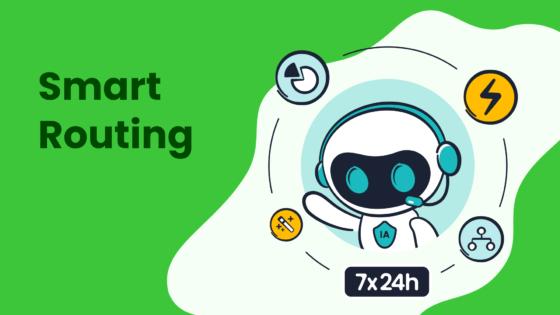
Importance of Compatibility with Existing Tools
When selecting call center QA software, compatibility with your existing tools is essential. Seamless integration ensures that your software works harmoniously with platforms like CRM systems, telephony infrastructure, and ticketing tools. This compatibility eliminates the need for manual data transfers, saving time and reducing errors.
Modern QA solutions offer connectivity options that allow you to unify customer data across systems. For example, integrating QA software with your CRM enables agents to access customer histories during calls. This improves efficiency and enhances the customer experience. Sobot’s Voice/Call Center Solution excels in this area by providing seamless integration with popular platforms, ensuring your team has all the information they need in one place.
Tip: Always verify that the QA software you choose supports the tools your call center already uses. This will help you avoid disruptions during implementation.
Evaluating API and Integration Capabilities
APIs play a critical role in ensuring your QA software integrates effectively with existing systems. A robust API allows your software to communicate with other tools, enabling real-time data collection and analysis. When evaluating APIs, focus on their performance and compatibility benchmarks.
Here are some key considerations:
- Look for APIs that connect seamlessly with CRM and telephony systems.
- Ensure the API supports real-time data synchronization for accurate reporting.
- Verify that the API can handle your call center’s data volume without lag.
Sobot’s QA software offers advanced API capabilities, making it easy to integrate with tools like Salesforce or Shopify. This ensures smooth data flow and enhances your ability to monitor and evaluate agent performance. Selecting the right API ensures your QA software interacts effectively with your current systems, boosting operational efficiency.
Testing the Software with Sobot’s Voice/Call Center Solution
Testing QA software before full implementation is crucial. It allows you to identify potential issues and ensure the software meets your call center’s needs. During testing, focus on how well the software integrates with your existing tools and whether it delivers the promised features.
Sobot’s Voice/Call Center Solution provides an excellent platform for testing. Its real-time monitoring, AI-powered analytics, and customizable evaluation forms make it a reliable choice for quality assurance. Use the testing phase to evaluate features like call tracking, smart routing, and data analytics. These tools help you assess the software’s impact on agent performance and customer satisfaction.
Note: Testing ensures a smooth transition and minimizes disruptions. It also helps you identify any adjustments needed for optimal performance.
By prioritizing seamless integration, evaluating API capabilities, and conducting thorough testing, you can ensure your call center QA software enhances your operations effectively.
Actionable Tips for Making the Final Decision
Prioritize Features That Align with Your Call Center’s Needs
Choosing the right call center QA software starts with identifying the features that align with your operational goals. Begin by setting measurable objectives. For instance, aim for a 15% improvement in first-call resolution rates or a 10% reduction in average handling times. These goals will guide your feature selection process.
Follow these steps to prioritize effectively:
- Define specific goals that match your call center’s strategy.
- Focus on metrics like customer satisfaction scores and call quality evaluations.
- Regularly review performance data to adjust your QA processes and ensure continuous improvement.
By focusing on these priorities, you can select software that enhances customer interactions and meets your business needs.
Tip: Avoid overloading your software with unnecessary features. Stick to tools that directly impact your call center’s performance.
Consider Long-Term Scalability and Vendor Support
Your call center QA software should grow with your business. Scalability ensures the software can handle increasing call volumes and support multiple teams or locations. Evaluate the vendor’s ability to provide ongoing support and updates as your needs evolve.
| Feature | Description |
|---|---|
| Limited Scalability | What works for 50 agents crumbles at 500, forcing costly migrations. |
| Scalable and Flexible | Designed to grow with your business, offering seamless integration. |
| Scalability | Should scale across multiple teams, locations, and languages. |
Additionally, ensure your contract includes provisions for scaling services up or down. Assess vendor performance regularly by reviewing SLA compliance and customer support quality. Reliable vendors like Sobot offer robust scalability and consistent support, ensuring your software remains effective as your business expands.
Note: Investing in scalable software now can save you from costly migrations later.
Leverage Reviews, Case Studies, and Success Stories
Reviews and case studies provide valuable insights into how call center QA software performs in real-world scenarios. Look for success stories that highlight measurable results. For example, a retail company reported a 25% increase in customer lifetime value and a 15% reduction in complaints after implementing QA software.
| Company | Industry | Key Metrics | Results |
|---|---|---|---|
| Company X | Retail | 25% increase in CLV, 15% reduction in complaints | Improved customer satisfaction and loyalty |
| Healthcare Provider Y | Healthcare | 30% reduction in medical errors | Enhanced patient outcomes and reduced wait times |
These examples demonstrate how the right software can transform customer interactions and operational efficiency. Use this information to evaluate whether a solution aligns with your goals.
Tip: Focus on case studies from businesses similar to yours. This ensures the software has a proven track record in your industry.
Start with a Trial of Sobot’s Call Center QA Software
Starting with a trial of Sobot’s Call Center QA Software allows you to experience its capabilities firsthand. This step helps you evaluate how well the software aligns with your call center’s needs while minimizing risks. A trial period provides a practical way to test features, assess usability, and gather feedback from your team.
Sobot’s software stands out for its user-friendly design. You don’t need coding skills to navigate or configure the platform. This simplicity ensures that your team can quickly adapt to the system without extensive training. During the trial, you’ll notice how the software’s advanced Natural Language Processing (NLP) and Large Language Model (LLM) technologies enhance response accuracy. These features improve the quality of customer interactions, making it easier for your agents to deliver exceptional service.
Tip: Use the trial to explore key features like real-time monitoring, customizable evaluation forms, and AI-powered analytics. These tools provide valuable insights into agent performance and customer satisfaction.
Sobot also offers professional support during the trial phase. Their technical team assists in training the software, ensuring a smooth onboarding process. This guidance helps you maximize the software’s potential and enhances the overall user experience.
Here’s what you can expect during the trial:
- A user-friendly interface that simplifies operations.
- Advanced technologies that improve response accuracy.
- Expert support to help you get started.
By starting with a trial, you gain a clear understanding of how Sobot’s Call Center QA Software can transform your operations. This hands-on experience ensures you make an informed decision, setting your call center up for long-term success.
Selecting the right call center quality assurance software is essential for improving customer satisfaction and operational efficiency. By understanding your needs, evaluating features, and ensuring seamless integration, you can transform customer interactions and boost your customer satisfaction score.
For example, QA software improves metrics like defect density and test coverage, ensuring higher service quality. Sobot’s Voice/Call Center solution offers advanced features like real-time monitoring and AI-powered analytics, making it an excellent starting point for enhancing your call center operations.
Tip: Begin with a trial to experience how Sobot’s tools can optimize your processes and elevate your service standards.
FAQ
What is the primary purpose of call center QA software?
Call center QA software helps you monitor and improve agent performance. It ensures consistent service quality by analyzing calls, providing feedback, and identifying areas for improvement. This tool enhances customer satisfaction and operational efficiency.
How does QA software improve customer interactions?
QA software evaluates every call to identify patterns and trends. It provides agents with actionable insights, enabling them to deliver personalized and effective support. This improves the overall quality of customer interactions.
Can QA software integrate with existing systems?
Yes, most QA software integrates seamlessly with CRM and telephony systems. This ensures agents have access to customer data during calls, reducing repetitive questions and improving service quality.
Is AI-powered analytics necessary in QA software?
AI-powered analytics provide deeper insights into agent performance and customer needs. They analyze large volumes of data quickly, helping you make informed decisions. This feature is essential for modern call centers aiming to stay competitive.
How do I choose the right QA software for my call center?
Start by identifying your call center’s needs. Look for features like real-time monitoring, customizable evaluation forms, and integration capabilities. Test the software through demos or trials to ensure it meets your requirements.
See Also
Essential Insights Into Call Center Quality Assurance Tools
Understanding Quality Management Systems in Call Centers
Top Strategies for Effective Call Center Quality Management
